When should you switch from puppy to adult dog food?
Bringing a new puppy home is a joyful moment for both of you. But there’s a lot of information to process, and adjustments to be made, as your puppy and you settle into living together.
One crucial element as a responsible pet owner is figuring out your new puppy’s diet. That includes everything from choosing the best food, correct portion sizes and the number of meals.
Feeding your puppy a high-quality diet, one that provides them with essential, adapted nutrients and sufficient calories, will help them to develop in a healthy way.
Article
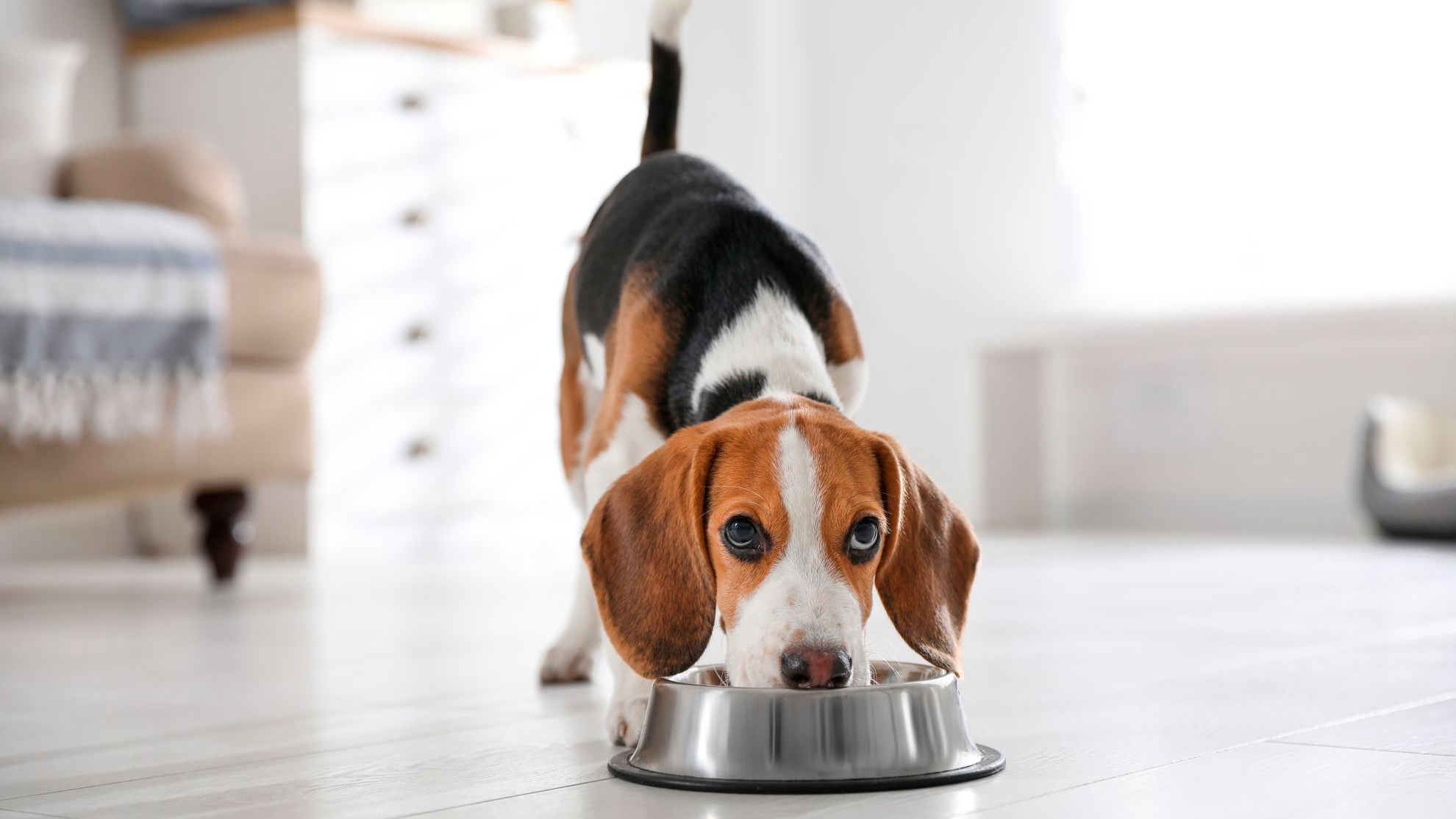
When to switch from puppy to adult food
Puppies have a lot of energy to expend as they discover and explore the world—if you live with one, you may have already noticed! This means that your puppy needs more calories per kilogram of body weight compared to an adult or senior dog. Their food, therefore, has a higher calorie, or energy, count.
It is important to know that as they move towards adulthood, your puppy’s dietary needs will change at each stage.
The four growth stages are:
- Birth to three weeks: key nutritional support will be their mother’s milk.
- Three weeks to two months: at this point, they will need to increase both their calorie intake and nutrient intake.
- Two months to adulthood: this is an important moment for bone and muscular development, so, a diet with the optimal balance of calcium and phosphorus is key.
- Eight months to adulthood: giant dog breeds have a very specific growing pattern. They need an appropriate diet to support their slower but extended growth period, making sure bones and muscles grow together harmoniously.
Quite simply, a puppy eating adult dog food will not get the required puppy nutrients for optimal development.
Your puppy’s diet should be changed when they have reached their adult size, which may differ from breed to breed.
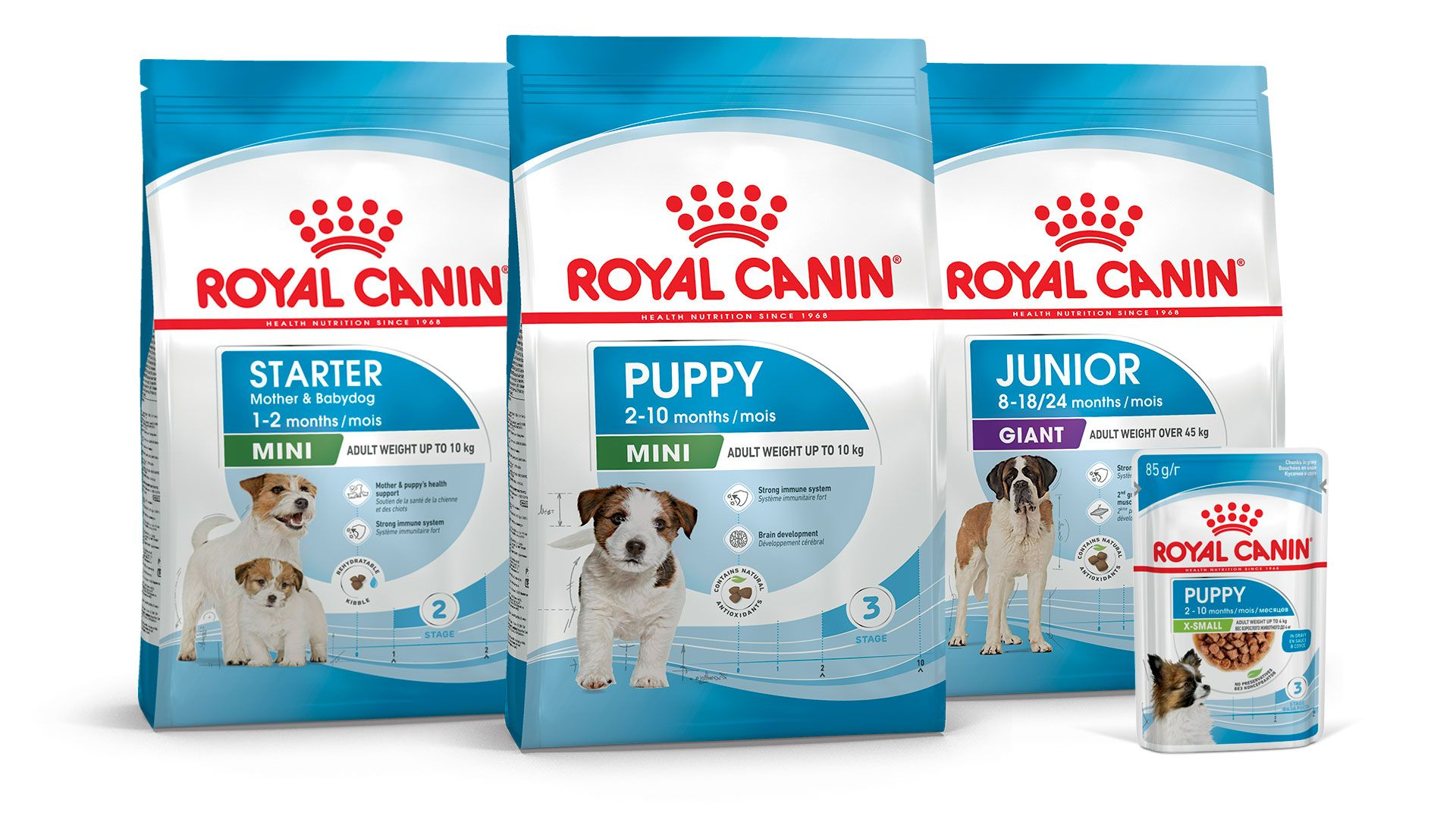
Our Puppy Growth Programme nutritional recommendations
Our products are designed to accompany your puppy’s growth, helping provide meaningful benefits thanks to specifically chosen nutrients for each stage of life.
Understanding the difference between puppy food and adult dog food
Puppy food has been carefully developed to provide all essential nutrients for optimal growth and development. In order to support healthy bones, joints, and muscles, puppy food labelling shows a higher count of protein, fat, calcium and phosphorus, compared to food for older dogs.
Keep in mind that there isn’t one fixed rule when it comes to puppy food nutrition. For example, a puppy from a small dog breed will not require the same amount of calories as a puppy from a large dog breed.
Making the transition from puppy food to adult dog food is important to get right. If you’re too early, their development may suffer and lead to nutritional deficiencies. If you’re too late, they may be more susceptible to obesity, and the complications that come with it. This is due to the higher calorie count of puppy food. Schedule a chat with your vet to make sure you’re on the right path with your canine.
How to switch your puppy to new food
When your puppy reaches adulthood, their metabolism slows down—the same thing also happens to puppies or dogs that have been spayed or neutered. So, it is time to make the switch to adult dog food, but how?
Remember to transition gradually from puppy to adult food and talk to your vet. A suggested timeline is seven days, of gradually reducing their puppy food portion while increasing their adult dog food portion. If you introduce something new into your puppy’s diet, their stomach and any sensitivities should always be considered.
Let's find the most adapted food!
Answer a few questions about your dog to discover a personalised food recommendation.
Five steps to properly switch your puppy’s food to adult food
We cannot stress it enough—you should never switch your pet’s food overnight. Making any type of change to their diet requires care and consideration. This will help to avoid an upset stomach or unwanted vomiting for your puppy or dog.
Here are the five essential steps for a smooth food transition.
Consult your vet
By the time your puppy is maturing into an adult, and requires a different diet, you both know and trust your vet. Give them a call or make an appointment to know how to gradually change from puppy food to adult dog food.
The vet has your pet’s medical history, so they will be able to advise on which dog food is best for them. They can also advise on changes to be made with regard to the number of meals or portion sizes.
This is also a good moment to give your puppy a health check and confirm that their weight and growth are within the healthy range. This knowledge will help your vet to make a better decision for their new diet.
Royal Canin offers a wide range of high-quality food options, which are adapted to dog size and breed, as well as nutrition-specific needs.
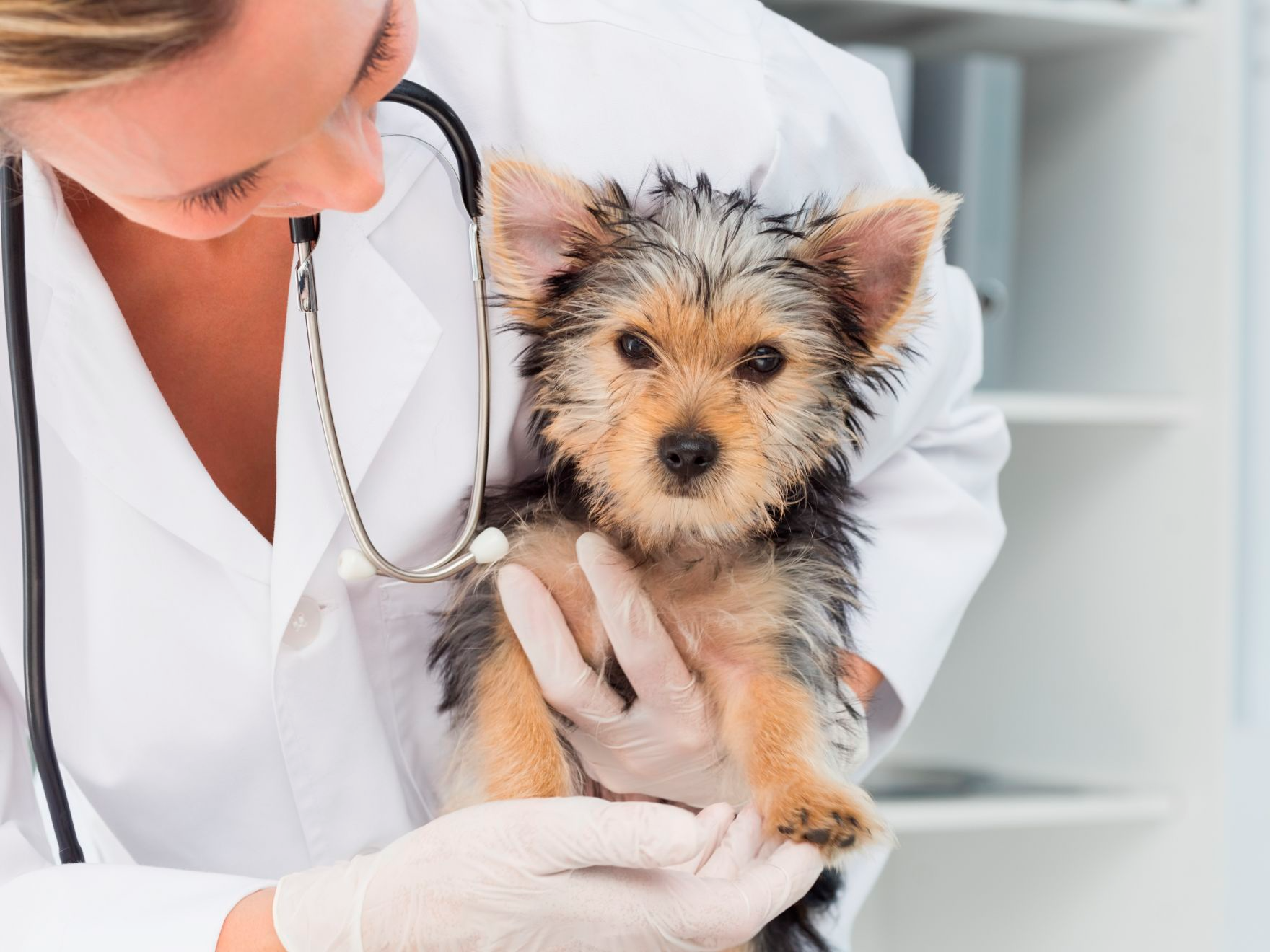
Consider their age
Puppies mature at different times, depending on the breed.
To give you a general idea of how long your puppy should be eating puppy food:
- Small dog breeds (including toy) mature between nine and ten months
- Medium-sized dog breeds mature around 12 months
- Large and giant dog breeds mature between 15 months and two years
If you are unsure of the size of your puppy, or their age, or if you have adopted a mixed breed, ask your vet for advice. They will know best when your puppy can start eating adult dog food.
Knowing when your puppy reaches adulthood will help you to understand when they should gradually change to dog food.

Take it slow
How long will the food switchover take? This question comes up again and again.
You should expect the switch to take around seven days. This gradual change will allow your puppy to adapt to the changing flavours and textures of their new food. It will also help to minimise any digestive upsets.
For example:
- Days one and two: try a ratio of 75% puppy food and 25% adult food
- Days three and four: try a ratio of 50% for each food
- Days five and six: try a ratio of 25% puppy food and 75% adult food
- Day seven: 100% adult food
Don’t forget, each dog is unique. It may take less than or more than seven days for the food transition to be complete. Go at the right pace for your puppy.
Observe your puppy’s behaviour
Transitioning to adult food will require you to keep a close eye on your puppy, noting any changes in their regular behaviour.
If your puppy appears to have lost their appetite, they may simply be having trouble adjusting to dog food. One solution would be to slow down on the split food ratio. For example, if your puppy shows disinterest in their food when they have 50% of each food in their bowl, go back to 75/25 for a day or two.
During this time, be sure to keep an eye on your puppy’s toilet habits and stool. It is highly likely that any changes will be due to the food transition. But it could also suggest a sensitive stomach or a need to switch the food they’re eating. Always consult your vet if you notice anything unusual.
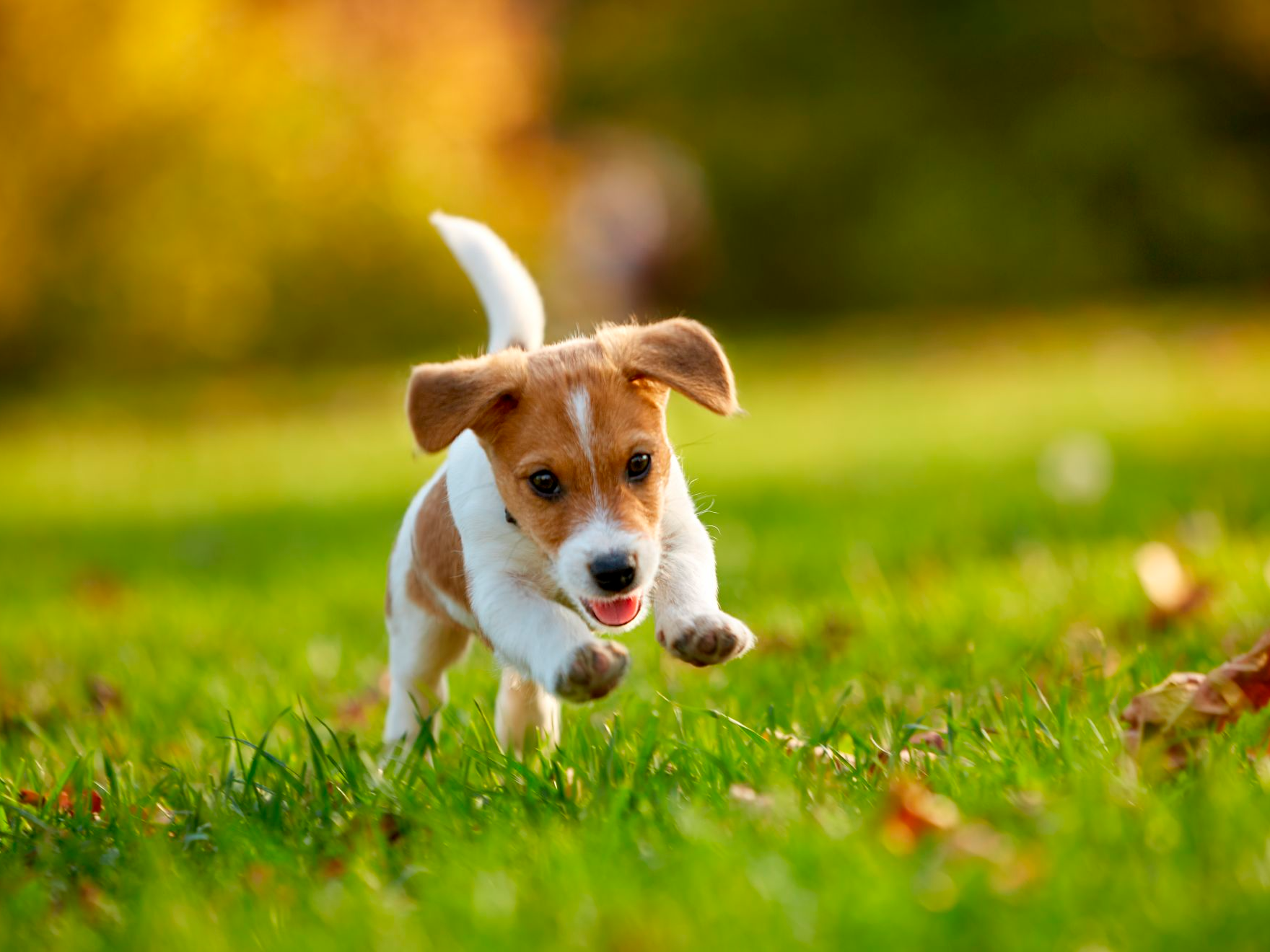
Test and learn
Mealtimes, food amounts, and preferred food textures can differ from dog to dog. It depends on various factors such as their breed, their size and the amount of activity they do, as well as their metabolic rate.
There are two things to consider when switching your puppy to adult dog food:
Portion size: the number of portions per day will change as the puppy matures. As for the overall quantities to give per day the best will be to follow the recommendations from your vet or the on pack feeding table.
Dry food, wet food, or both? Mixed feeding is beneficial to dogs at any age. Here’s why:
- A combination of wet and dry foods offers more variety. You have a growing puppy on your hands after all, so why not make feeding time an exciting experience for their nose and taste buds?
- A combination of wet and dry foods also offers the best of both nutritional worlds. Wet food will help make sure that your puppy stays hydrated as it ups their water consumption. Dry food plays a role in helping to keep your puppy’s teeth clean.
- If you happen to have a fussy canine on your hands, mixed feeding can help with persuading them to eat what they need at mealtimes.
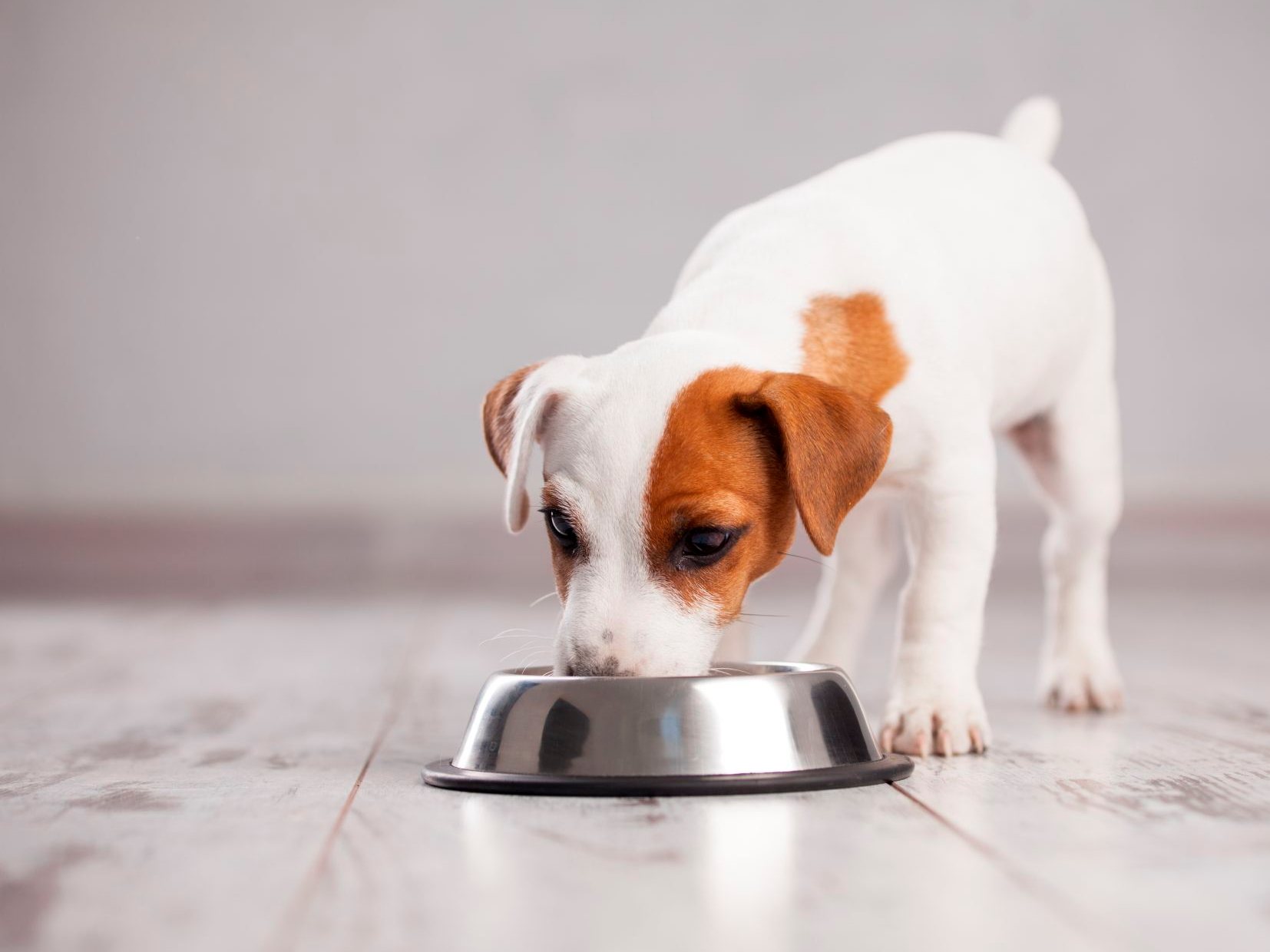
It’s important to be patient with your puppy during this transition. They are maturing as they go so consider that they may feel overwhelmed at all the changes taking place. Any toilet accidents or stomach upsets should be calmly dealt with, and every achievement should be acknowledged.
Use these five essential steps to help guide you when changing your puppy’s food routine. This will contribute to making it a positive experience for both of you.
Related articles
Like & share this page